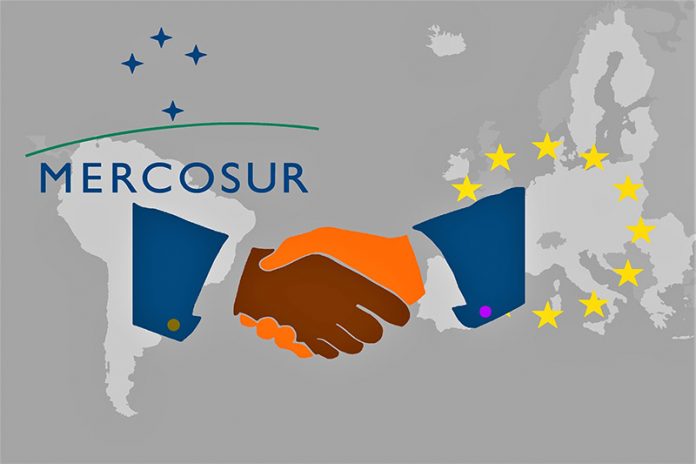 When the Presidents of the founding members of the Southern Common Market (MERCOSUR) — Argentina, Brazil, Paraguay and Uruguay — will (virtually) gather at the Buenos Aires Summit, on March 26, to assess the group’s trajectory since its creation, 30 years ago, important changes will be noted on the way each country interacted with each other at that time, and how they connected with the global economy as well.
When the Presidents of the founding members of the Southern Common Market (MERCOSUR) — Argentina, Brazil, Paraguay and Uruguay — will (virtually) gather at the Buenos Aires Summit, on March 26, to assess the group’s trajectory since its creation, 30 years ago, important changes will be noted on the way each country interacted with each other at that time, and how they connected with the global economy as well.
MERCOSUR countries comprise an area over 12 million square Km (three times bigger than the European Union); a population of 275 million; a joint GDP around US$ 2,75 trillion — the fifth largest in the world; and an extraordinary endowment of natural resources, notably in food and energy.
The creation of MERCOSUR in 1991 responded to the need to mobilize the member countries’ assets to catch up with a world economy marked by increasing competition, globally integrated financial markets and fastly moving technological standards.
At the national level of the member countries, the rise and strengthening of MERCOSUR was compounded by the consolidation of democratic institutions, upon which MERCOSUR’s Democratic Clause was later to be built upon.
Also instrumental to MERCOSUR’s legal security was the development of provisions in areas such as social security, consular assistance, sanitary controls and consumer protection.Not by chance, MERCOSUR’s global trade flows expanded 12 times since 1991, side by side with equally remarkable growths in the integration of production chains and on the exploration of renewable sources of energy.
Together, this set of achievements paved the way to MERCOSUR’s ambitious negotiation agenda.
Today, MERCOSUR has free trade agreements with all South American countries, but Guyana and Suriname.
More recently, proposals for the negotiation of free trade agreements were made to Central American and Caribbean countries.
An approximation process is under way with the Pacific Alliance countries, made up of Chile, Colombia, Mexico and Peru, on topics such as trade facilitation, non-tariff barriers and business dialogue.
As a consequence, a de facto free trade area was in operation in the region since 2019.Outside the region, trade agreements were made with India (2005); Southern African Customs Union (SACU- 2008); and also with Middle East countries (Israel in 2007; Egypt in 2010; and Palestine in 2011).
In 2018, free trade agreements negotiations were started with Canada, South Korea and Singapore.In 2019, negotiations were concluded with the European Union and the European Free Trade Association (both now under technical and legal review).
In 2020, exploratory dialogues started with Vietnam.
Throughout this process, a strong emphasis has been put on environmental and social aspects.
Non-tariff provisions are also being progressively dealt with, in areas such as investments, services, government procurement and e-commerce, among others.
On December 16, 2020, Argentina took over the Pro-Tempore Presidency (PPTA) of MERCOSUR for a semester period. Without prejudice to MERCOSUR’s economic agenda, the PPTA paid special attention to the human and political dimension of the integration process.
Among the steps carried out by the PPTA, it is worth mentioning the MERCOSUR Citizenship Initiative, which accords special treatment provisions for the nationals of the member countries in areas such as freedom of movement in their territories; border cooperation; labor and employment; social security; and consular assistance, among others.MERCOSUR has consolidated itself as an essential development tool for its member countries and as a symbol of open regionalism in the world economy. At 30, its anniversary is to be celebrated.

















